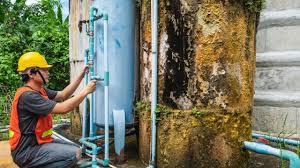Stories you may like
Curator
A curator is responsible for the care, management, and interpretation of collections in museums, galleries, libraries, or other cultural institutions. Their role involves a combination of research, preservation, exhibition planning, and educational outreach. Curators play an important role in ensuring the preservation and presentation of artworks, artifacts, or documents, while also making them accessible to the public.
Curators are involved in various tasks, including acquiring new pieces for the collection, cataloging and documenting existing items, conducting research to enhance knowledge and understanding of the collection, and curating exhibitions or displays that showcase specific themes, artists, or historical periods. They collaborate with other museum professionals, such as conservators, educators, and exhibition designers, to create engaging and informative displays that engage visitors and provide meaningful experiences. Curators also play a role in developing educational programs, organizing lectures or workshops, and contributing to scholarly publications to promote the cultural and educational value of the institution's collection.
Curators play an important role by meticulously selecting, researching, and interpreting artworks and artifacts to create meaningful exhibitions and displays for the public. Through their curation, curators contribute to the preservation and promotion of cultural heritage, fostering a deeper understanding and appreciation of art, history, and diverse cultures.
Duties and Responsibilities
The duties and responsibilities of a curator can vary depending on the type of institution they work for and the specific focus of their collection. However, here are some common responsibilities of curators:
- Collection Management: Curators are responsible for the care, preservation, and management of the institution's collection. This includes acquiring new artworks, artifacts, or documents through purchases, donations, or loans. They also catalog and document items, ensuring accurate records of provenance, condition, and historical significance.
- Exhibition Planning: Curators curate and organize exhibitions or displays that showcase the collection to the public. They develop exhibition concepts, select artworks or artifacts, determine their placement and arrangement, and work with exhibition designers to create engaging and informative displays. Curators may also write exhibition texts or labels to provide context and interpretation for visitors.
- Research and Scholarship: Curators conduct research to enhance knowledge and understanding of the collection. They contribute to scholarly publications, write catalog essays, and present their research findings at conferences or lectures. Curators may also collaborate with external researchers or institutions to expand knowledge and engage in academic dialogue.
- Educational Outreach: Curators develop educational programs and initiatives to engage the public with the collection. This can include organizing guided tours, workshops, lectures, or educational activities for schools or community groups. They aim to make the collection accessible and promote understanding and appreciation of art, history, or cultural heritage.
- Conservation and Preservation: Curators work closely with conservators to ensure the proper preservation and conservation of artworks or artifacts. They oversee appropriate storage conditions, environmental controls, and handling protocols to safeguard the collection for future generations. Curators may also coordinate conservation treatments or assessments for items in need of repair or restoration.
- Collaboration and Networking: Curators collaborate with other museum professionals, such as educators, archivists, and exhibition designers, to create interdisciplinary experiences and programs. They also network with artists, collectors, scholars, and other institutions to foster partnerships, borrow or lend artworks for exhibitions, and stay informed about current trends and developments in the field.
- Collection Interpretation: Curators play a crucial role in interpreting the collection for diverse audiences. They develop interpretive materials, such as exhibition texts, labels, and multimedia resources, to provide context, historical background, and thematic narratives. Curators strive to engage visitors, spark curiosity, and facilitate meaningful connections between the audience and the collection.
- Administrative and Organizational Tasks: Curators often have administrative responsibilities, such as budget management, grant writing, and reporting. They may also participate in strategic planning, policy development, and fundraising efforts to support the institution's mission and objectives.
Workplace of a Curator
The workplace of a curator can vary depending on the type of institution they work for and the nature of their collections. Curators can be found in museums, art galleries, cultural institutions, libraries, archives, or research centers. Their work environments often encompass a combination of office spaces, exhibition halls, collection storage areas, and research facilities.
Curators spend a significant amount of time in their offices or workstations, where they engage in research, documentation, and administrative tasks. This may involve conducting scholarly research, writing exhibition catalogs, preparing grant proposals, or managing the institution's collection database. They collaborate with colleagues, such as conservators, educators, and exhibition designers, in planning and organizing exhibitions or events.
Additionally, curators spend considerable time in exhibition spaces, ensuring the proper installation, display, and interpretation of artworks or artifacts. They work closely with exhibition teams to design layouts, write exhibition texts, select appropriate lighting and display techniques, and oversee the installation process. Curators may also interact with visitors, giving guided tours, conducting educational programs, or participating in public lectures.
Furthermore, curators frequently visit off-site locations to conduct research, attend conferences or meetings, negotiate loans or acquisitions, or collaborate with external scholars or institutions. They may travel to other museums or collections for research purposes, or to evaluate potential acquisitions or loans for their own institution.
How to become a Curator
Becoming a curator typically requires a combination of education, experience, and networking within the field of art, history, or a related discipline. Here are the general steps you can follow to pursue a career as a curator:
- Obtain a relevant bachelor's degree: Start by earning a bachelor's degree in a field such as art history, museum studies, archaeology, anthropology, or another related subject. This will provide you with a solid foundation of knowledge in the field.
- Pursue a master's degree: Although not always required, a master's degree in a relevant field can greatly enhance your prospects for becoming a curator. Consider earning a Master of Arts (MA) or Master of Fine Arts (MFA) in art history, museum studies, or a specialized curatorial program. These programs often provide practical experience and internships that can be valuable for building your skills and network.
- Gain relevant experience: Seek out opportunities to gain hands-on experience in museums, galleries, or other cultural institutions. Look for internships, volunteer positions, or entry-level jobs that allow you to work closely with collections, exhibitions, or curatorial projects. This experience will demonstrate your practical skills and dedication to the field.
- Develop specialized knowledge: Curators often specialize in specific areas or disciplines, such as contemporary art, ancient history, or a particular culture. Develop expertise in your chosen area through additional coursework, research, and attending conferences or workshops.
- Build a professional network: Networking is crucial in the art and museum field. Attend industry events, join professional organizations, and connect with other curators, scholars, and professionals in the field. Networking can lead to job opportunities, collaborations, and mentorship.
- Apply for curatorial positions: Once you have gained sufficient education and experience, start applying for curatorial positions in museums, galleries, or cultural institutions. Keep an eye on job boards, museum websites, and professional organizations' listings for openings. Tailor your application materials, including your resume and cover letter, to highlight your relevant experience and expertise.
- Continuously learn and grow: Curatorial work is an ongoing process of learning and staying up-to-date with developments in your field. Attend conferences, workshops, and seminars to expand your knowledge and keep abreast of current trends and best practices.
Helpful Resources
As a curator, there are several helpful resources you can utilize to enhance your knowledge, stay updated with industry trends, and connect with other professionals. Here are some key resources:
- American Alliance of Museums (AAM): AAM is a leading professional organization for museum and cultural professionals in the United States. They offer resources, professional development opportunities, and access to a network of curators and museum experts. Their website provides valuable information on best practices, standards, and career resources.
- College Art Association (CAA): CAA is an organization dedicated to advancing the visual arts and supporting professionals in the field. They offer resources, conferences, publications, and job listings relevant to curators, art historians, and educators. Their website provides access to journals, guidelines, and a network of art professionals.
- Association of Art Museum Curators (AAMC): AAMC is an organization that supports curators and strives to promote the profession of curating. They offer professional development programs, conferences, mentorship opportunities, and a platform for networking and knowledge sharing. Their website provides access to resources, guidelines, and a job board.
- Smithsonian Institution: The Smithsonian Institution is a renowned network of museums and research centers in the United States. Their website offers a wealth of information, research materials, and educational resources. Exploring their collections, exhibitions, and publications can be highly beneficial for curators seeking inspiration and expanding their knowledge.
- Museum websites and publications: Many museums have their own websites that provide valuable resources for curators. Explore websites of renowned museums such as the Metropolitan Museum of Art, the Museum of Modern Art, the Art Institute of Chicago, and the National Gallery of Art. Additionally, subscribe to museum publications like Artforum, ARTnews, and Museum magazine to stay informed about the latest trends, exhibitions, and research.
- Online platforms and communities: Engage with online platforms and communities focused on curatorial practice. Websites like Curatorspace offer opportunities for curators to connect with exhibition spaces and find open calls for curatorial projects. Social media platforms like LinkedIn, Twitter, and Instagram can also be valuable for networking, following curatorial conversations, and discovering new opportunities.
Skills needed for a Curator
1. Academic & Research Skills
- Art history / cultural studies / museum studies knowledge– strong grasp of the subject area being curated (e.g., art, history, science, archaeology).
- Research and cataloging – ability to study, classify, and document collections accurately.
- Archival management – understanding how to preserve and store artifacts properly.
2. Collection Management
- Collection curation – selecting, acquiring, and displaying items meaningfully.
- Conservation awareness – understanding preservation techniques to protect collections from deterioration.
- Inventory management – maintaining digital and physical records of exhibits.
3. Communication & Presentation
- Writing and storytelling – crafting exhibition labels, catalogs, and public materials that engage diverse audiences.
- Public speaking – conducting tours, lectures, and educational programs effectively.
- Collaboration – working with artists, researchers, donors, and museum staff.
4. Technical & Digital Skills
- Database management – experience with museum collection software (e.g., TMS, PastPerfect).
- Digital archiving – digitizing collections for online access.
- Multimedia presentation – integrating technology (AR/VR, digital displays) into exhibits.
5. Administrative & Project Management
- Budgeting and fundraising – securing grants, managing finances, and donor relations.
- Event planning – organizing exhibitions, educational workshops, and cultural programs.
- Strategic planning – aligning exhibits with institutional missions and audience needs.
6. Creative & Critical Thinking
- Aesthetic judgment – curating exhibits that are visually and intellectually engaging.
- Analytical thinking – evaluating artifacts’ authenticity, context, and significance.
- Problem-solving– handling logistical, ethical, or preservation challenges.
7. Personal Qualities
- Attention to detail
- Cultural sensitivity and inclusivity
- Passion for history, art, or science
- Curiosity and lifelong learning mindset




User's Comments
No comments there.